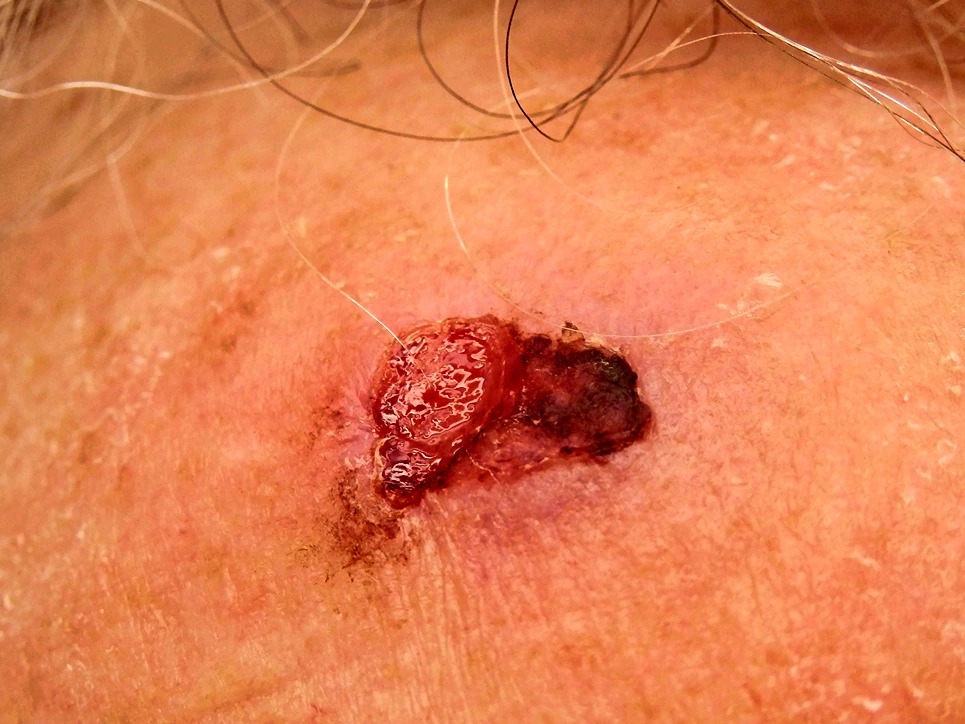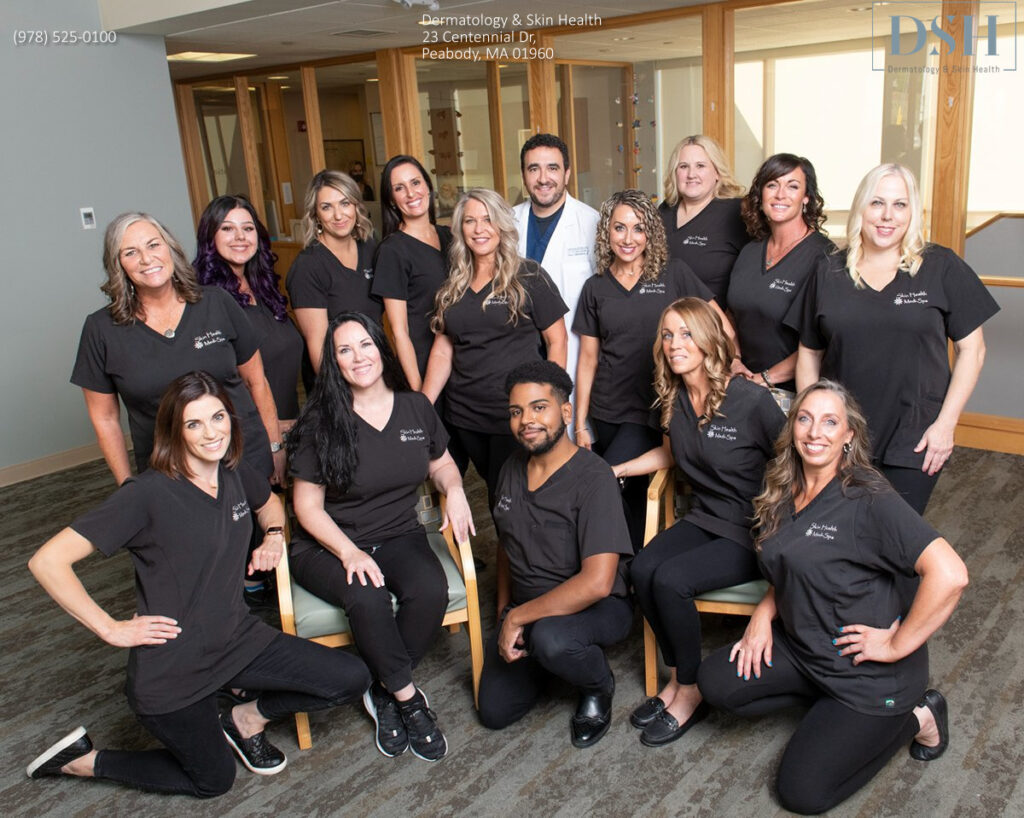

Squamous cell carcinoma (SCC) is one of the most common skin cancers diagnosed in the United States each year. While it can often be cured if caught early, squamous cell carcinoma does carry a risk of recurrence even after treatment with Mohs surgery, the gold standard treatment technique.
This article will provide an in-depth look at squamous cell carcinoma and Mohs surgery, discuss the factors that can lead to recurrence after Mohs, how recurrence is detected and treated, and steps that can be taken to help prevent recurrence.
Gaining a comprehensive understanding of the potential for SCC recurrence can help ensure appropriate follow-up and vigilance after Mohs surgery.
Squamous cell carcinoma arises from the epidermal keratinocytes of the skin and is strongly linked to cumulative sun exposure and ultraviolet radiation damage over one's lifetime. The risk is higher in those with fair skin, a history of sunburns, and chronic sun exposure.
Infection with high-risk strains of human papillomavirus (HPV) has also been associated with SCC, particularly in immunocompromised patients. SCC often appears as a rough, scaly patch or ulcerated nodule on frequently sun-exposed areas like the head, neck, and back of the hands. Though it can metastasize in advanced cases, SCC has a high cure rate when identified and treated early.
Mohs micrographic surgery is considered the treatment of choice for many squamous cell carcinomas, particularly those in high-risk areas on the face and neck. In Mohs surgery, the visible tumor is removed in layers under local anesthesia, with each freshly-excised layer carefully mapped and microscopically examined to check for residual cancer cells at the margins.
Additional layers are removed and examined until no cancer cells remain, allowing for complete removal of the tumor while preserving as much normal tissue as possible. This meticulous technique helps achieve cure rates of up to 99% for SCC.
Though Mohs surgery has excellent cure rates, there are certain tumor characteristics and clinical scenarios that can make complete removal more challenging. One of the most important factors is the initial lateral margins around the visible tumor prior to Mohs. Narrow margins increase the chances that microscopic extensions of SCC were missed on the initial excision. Another consideration is perineural invasion, where cancer cells track along nerve bundles deeper under the skin.
This can require additional excision of the involved nerve to clear margins. Extensive sun damage leading to actinic keratoses around the tumor can also hide cancer cell extensions. In rare cases, even with exhaustive sampling, Mohs surgery may still fail to remove every last cancer cell.
Recurrence after Mohs surgery occurs when microscopic remnants of squamous cell carcinoma are left behind and later proliferate into clinically apparent tumors. The most straightforward cause is incomplete excision, where positive margins were undetected on final pathology.
However, even with microscopically clear margins, cancers can still recur due to factors like aggressive tumor biology and field cancerization. Highly undifferentiated SCCs have rapid growth rates and can demonstrate "skip metastasis" beyond expected margins.
Field cancerization refers to large sun-damaged areas with genetically altered keratinocytes, allowing new cancers to arise even after removal of the original tumor. Immunosuppression also increases the risk of recurrence.
Careful follow-up and skin examination is critical for detecting SCC recurrence early when treatment is most effective. Patients who have had Mohs are advised to conduct regular self-exams and see their dermatologist every 3-12 months for several years based on individual risks.
Suspicious lesions near the surgical site should prompt clinical imaging like dermoscopy, confocal microscopy or OCT to better characterize. Comparison to past images can help determine if a lesion is new or changing. Biopsy then confirms SCC recurrence, with histopathology indicating whether it is recurrence of the original tumor or an entirely new primary SCC. Sentinel lymph node biopsy can also be considered to stage for metastasis.

For resectable localized recurrence, Mohs surgery is again the first-line treatment, with intent to clear margins. Preoperative imaging helps guide depth of excision needed. Larger or more invasive recurrent tumors may require surgical excision or reconstructive surgery rather than Mohs.
Radiation therapy is also highly effective, either as adjuvant treatment after surgery or as primary treatment for inoperable recurrences. Chemotherapy may be considered for extensive nodal metastases.
In advanced or metastatic SCC, newer immunotherapies like PD-1 inhibitors show promise in boosting the immune response against cancer cells. Photodynamic therapy is also being studied as an alternative non-surgical approach for superficial SCCs. Multidisciplinary input guides optimal recurrence management.
The prognosis following SCC recurrence varies greatly depending on the size and location of the recurrent tumor as well as the patient’s overall health. Small, superficial recurrences detected early on the trunk or extremities generally have excellent outcomes when treated aggressively.
However, recurrent tumors on the lips, ears or temple can be challenging to reconstruct and control. Large invasive recurrences have higher risks of metastasis to local lymph nodes, negatively impacting survival. Recurrence also signals increased risk for developing additional primary SCCs over one’s lifetime due to extensive sun damage.
Preventing squamous cell carcinoma recurrence starts with comprehensive sun protection to avoid further sun-induced genetic damage. broad-spectrum sunscreen, protective clothing and avoidance of midday sun should be practiced routinely.
Self-skin examinations every 1-3 months allow patients to detect suspicious lesions early. Adherence to follow-up schedules with dermatologic imaging is also key for identifying recurrence before it advances.
Clear communication between the Mohs surgeon and patient regarding individualized recurrence risks helps guide optimal long-term surveillance. Preventing new primary SCCs through sun protection and regular exams is also imperative.
While Mohs surgery has exceptional cure rates, recurrence of squamous cell carcinoma can still occur due to factors like aggressive tumor biology and incomplete excision. Careful post-operative follow-up enables early detection and prompt treatment of recurrent disease when prognosis is most favorable.
Limiting further sun exposure and damage can also help reduce recurrence risk by preventing development of new primary SCCs. A comprehensive approach to follow-up care and secondary prevention is key to improving outcomes and minimizing morbidity after squamous cell carcinoma treatment with Mohs surgery. Patients and providers must partner together to optimize surveillance and achieve the best possible results.

Certain factors like lesion size, location on ears/lip vs other sites, and poorly differentiated histology can increase the risk of recurrent tumors post-Mohs. A multivariate analysis showed lesion size over 2cm was the strongest predictor.
Most recurrent squamous cell carcinoma presents within 2 years as a small nodule or papule at the original surgical site. Rates of recurrence then level off after 5 years. However, late recurrences more than 5 years post-op are still possible according to long-term follow up studies.
Merkel cell carcinoma has been shown to have the highest recurrence rates of the common skin cancers after Mohs surgery, around 20-30% due to its aggressive nature. Meanwhile basal cell carcinoma has reliably low rates under 5% due to its slower growth pattern.
It's always wise to remain vigilant and contact your dermatologist or Mohs surgeon if any new changes in skin appearance or texture develop at the surgical site within 5-10 years. Early detection of recurrent tumors results in the best outcome and avoidance of further invasive treatment.
If your desired appointment type or preferred provider is unavailable online, kindly call (978) 525-0100 for Peabody, MA and (603) 742-5556 for all New Hampshire locations. Alternatively please feel free to send us your request via the patient portal, or via email at info@dermskinhealth.com
*For medical dermatology appointments in MA please dial (978) 525-0100 or fill out the appointment request form above.